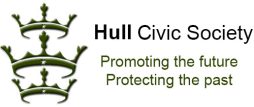“The Timeball on the Guildhall”—A summary of a talk given by Rob Kingdom, retired Project Director.
“Much in little.” – what a wide-ranging and informative talk! Rob Kingdom’s summary of the background to maritime navigation was succinct and clearly-illustrated with diagrams.
We learned that the Royal Observatory at Greenwich was created as early as 1675, to deal with the longitude problem and in 1884 it was agreed that Greenwich was the prime meridian. It was also good to be reminded of the vital part John Harrison, clock maker of Barton-on-Humber, had played, one of his timepieces being a breakthrough in enabling navigation.
Methods of communicating time to ships (to enable chronometers to be set) were discussed, such as firing time-canons or flying flags, both problematic. Timeballs had the advantage of being visible from all directions. The telegraph transmitted an accurate time signal from Greenwich, here to the Lowgate Post Office by the later radio telegraphy. The Guildhall timeball in Hull was a late addition to the building, beginning to work in 1920, an anachronism.
Next, Rob explained that World War II bombing damaged the Guildhall, including the tower. He showed clear pictures and diagrams, emphasising that the whole tower forms the clock. Aerial photographs indicated the magnitude of the task of renovation! No longer is the clock wound by hand. Moreover, it can be repaired from inside the tower. Both the weathervane (representing the Bounty) and the new timeball are resplendent in gold leaf. The ball now drops more slowly than the original and does not operate if the mast is icy. Now I have a new ambition for 2025, to hear the carillon!
Thank-you, Mr Kingdom, for a truly fascinating evening.
By Mrs Susan Heritage
